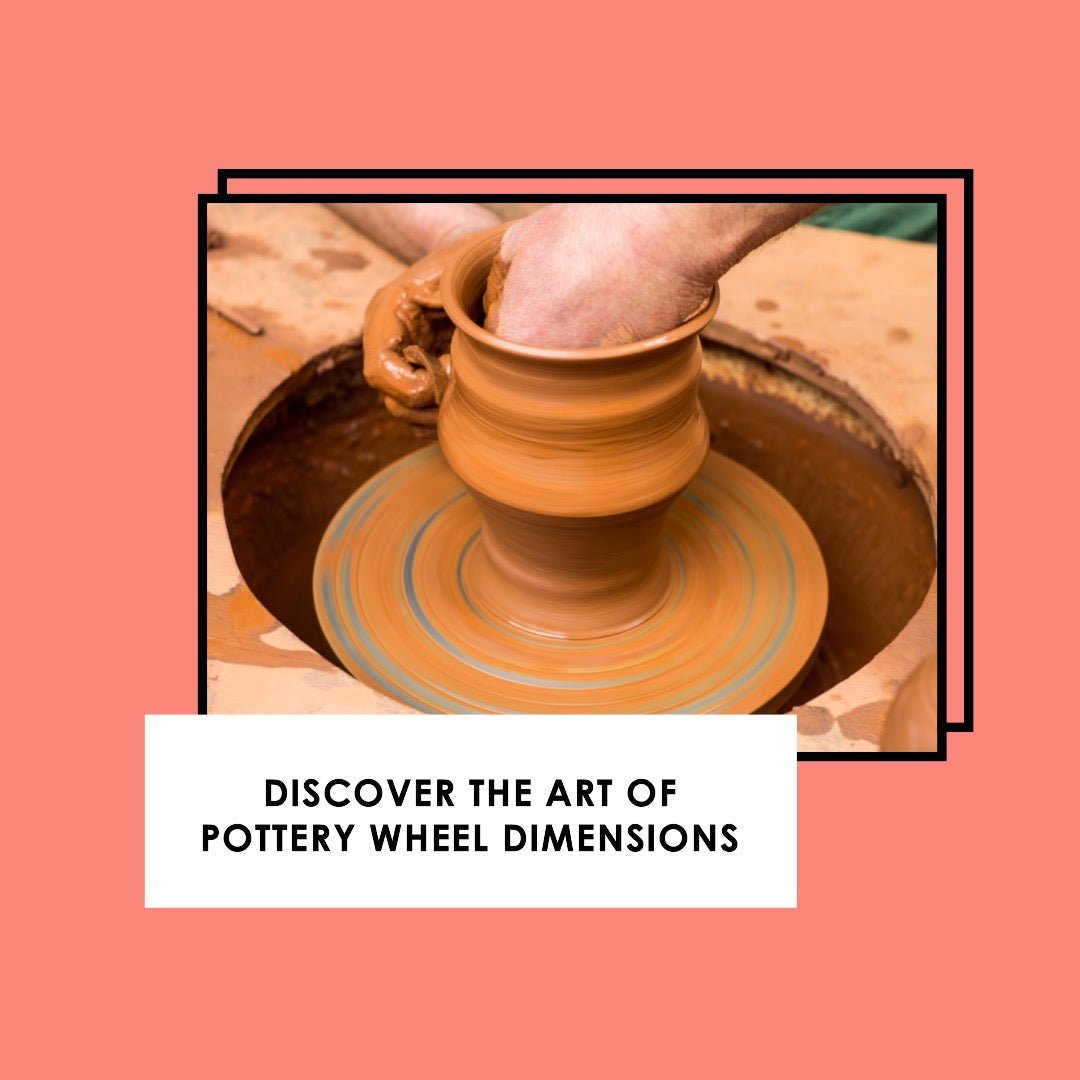
Exploring Pottery Wheel Dimensions: A Guide for Crafters and Artists
Key Takeaway Table
Aspect Detail (Metric/Imperial) Wheel Head Diameter Commonly 30.5 cm or 35.5 cm (12" or 14"), with 35.5 cm (14") being more versatile for larger pieces. Wheel Head Height Typically ranges between 48.3 to 53.3 cm (19 to 21 inches) from the ground, adjustable based on user comfort. Bat Pins Spacing Usually spaced about 25.4 cm (10 inches) apart for attaching bats to the wheel head. Wheelhead Size Range Varies from 20.3 cm to 35.5 cm (8" to 14") in diameter, selected based on project types. Motor Size and Clay Capacity Professional wheels often can center at least 22.7 kg (50 lbs) of clay.
Introduction
Pottery, an art form steeped in history, requires not just skill but also the right tools. Among these, the pottery wheel plays a pivotal role. Understanding the dimensions of a pottery wheel is crucial for both novice and seasoned potters. This guide dives into the specifics of pottery wheel dimensions, blending metric and imperial measurements for a global audience. We'll explore how these dimensions impact your pottery projects and the comfort of your crafting experience.
Understanding Wheel Head Dimensions
The diameter of the wheel head is a crucial aspect to consider when selecting a pottery wheel. Common sizes include 30.5 cm (12 inches) and 35.5 cm (14 inches), with the latter offering more versatility for larger projects. This section will discuss how the diameter of the wheel head influences the type of work you can do. For those looking for wheels that come with a complete set of tools, check out our Craftsman Maxi Package and Discus Compact Mini Package, which include wheel heads suited for a range of projects.
The Importance of Wheel Head Height
Wheel head height, typically between 48.3 cm and 53.3 cm (19 to 21 inches) from the ground, is another critical dimension. This height can impact your posture and comfort while working. We'll explore standard heights and how to adjust them to your ergonomic needs. For wheels with adjustable heights, consider our G27 Gladstone Special Needs Wheel and G28 Momentum Wheel, which cater to various user heights and needs.
Bat Pins and Their Role
Bat pins, usually spaced about 25.4 cm (10 inches) apart, are essential for attaching bats to the wheel head, allowing for versatile pottery-making. This section will cover their importance and standard spacing. For wheels with well-designed bat pin systems, our Discus Compact Wheel and G30 Gladstone Classic Wheel offer excellent options.
Wheelhead Size Variability
Pottery wheels come in a range of sizes, from 20.3 cm to 35.5 cm (8 inches to 14 inches) in diameter. This variability allows potters to choose a wheel that best suits their project types. We'll discuss how to match wheelhead size with your pottery goals. The G33 Standing Kick Wheel and G34 Gladstone Bailey Wheel provide diverse size options for different pottery endeavors.
Motor Size:
When selecting a pottery wheel, the motor's power is a crucial factor to consider, as it determines the wheel's capacity to handle various types and sizes of clay projects. Motors in pottery wheels typically range in power from 1/4 HP/180W to 1 HP/750W. For hobbyists and those working on smaller projects, a motor with 1/4 HP/180W to 1/2 HP/370W) is usually sufficient. These motors provide enough power for basic throwing and smaller pieces.
For more demanding tasks, such as larger or heavier pieces of clay, a more powerful motor is necessary. In these cases, a 3/4 HP/500W to 1 HP/750W motor is ideal. These higher-powered motors ensure consistent speed and torque, even when working with substantial amounts of clay. In professional or educational settings where the wheel is used frequently and for various project sizes, opting for a motor towards the higher end of this range is often beneficial.
The choice of motor power should align with the types of projects you plan to undertake, ensuring that the wheel can handle your creative ambitions without strain or limitation.
Choosing the Right Pottery Wheel: Factors to Consider
When it comes to selecting a pottery wheel, several factors need to be considered to ensure it meets your specific needs. This section will provide a comprehensive guide on what to look for, including:
- Dimensional Fit: Ensuring the wheel fits your workspace and project scale.
- Comfort and Ergonomics: Selecting a wheel height and size that aligns with your body type and crafting style.
- Type of Pottery: Considering the type of work you intend to do and selecting a wheel that caters to those needs.
Explore our diverse range of wheels, like the G28 Momentum Wheel and G33 Standing Kick Wheel, which cater to various requirements and preferences.
Pottery Wheel Dimensions: A Comparative Overview
In this section, we will compare different models of pottery wheels available in our collection, focusing on their dimensions and suitability for various pottery projects. This comparative analysis will include wheels like the Discus Compact Mini Package and the Gladstone Classic Wheel, highlighting how their dimensions cater to different pottery-making needs.
The Impact of Wheel Dimensions on Pottery Techniques
Different pottery techniques might require specific wheel dimensions for optimal results. This part of the blog will delve into how dimensions influence various pottery techniques, from throwing large pieces to intricate detailing. It will also discuss how choosing a wheel with the right dimensions can enhance the quality and efficiency of your work.
Conclusion: The Integral Role of Pottery Wheel Dimensions in Crafting
To conclude, the blog post will recap the key points discussed, emphasizing the importance of understanding and choosing the right pottery wheel dimensions. It will encourage readers to consider these factors carefully to enhance their pottery-making experience. The conclusion will also invite readers to explore our full range of pottery wheels at our Pottery Wheels Collection to find the perfect fit for their artistic endeavors.

